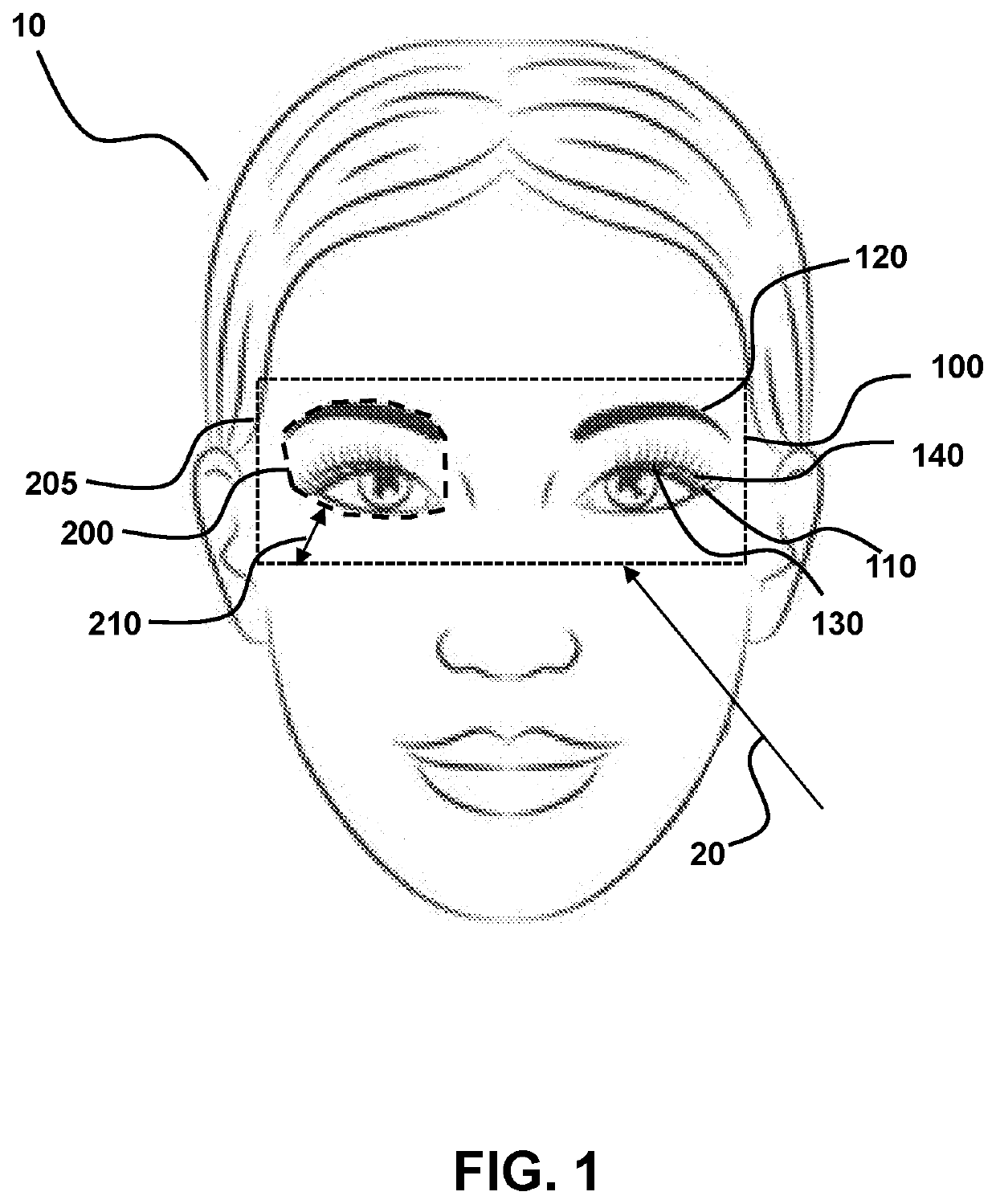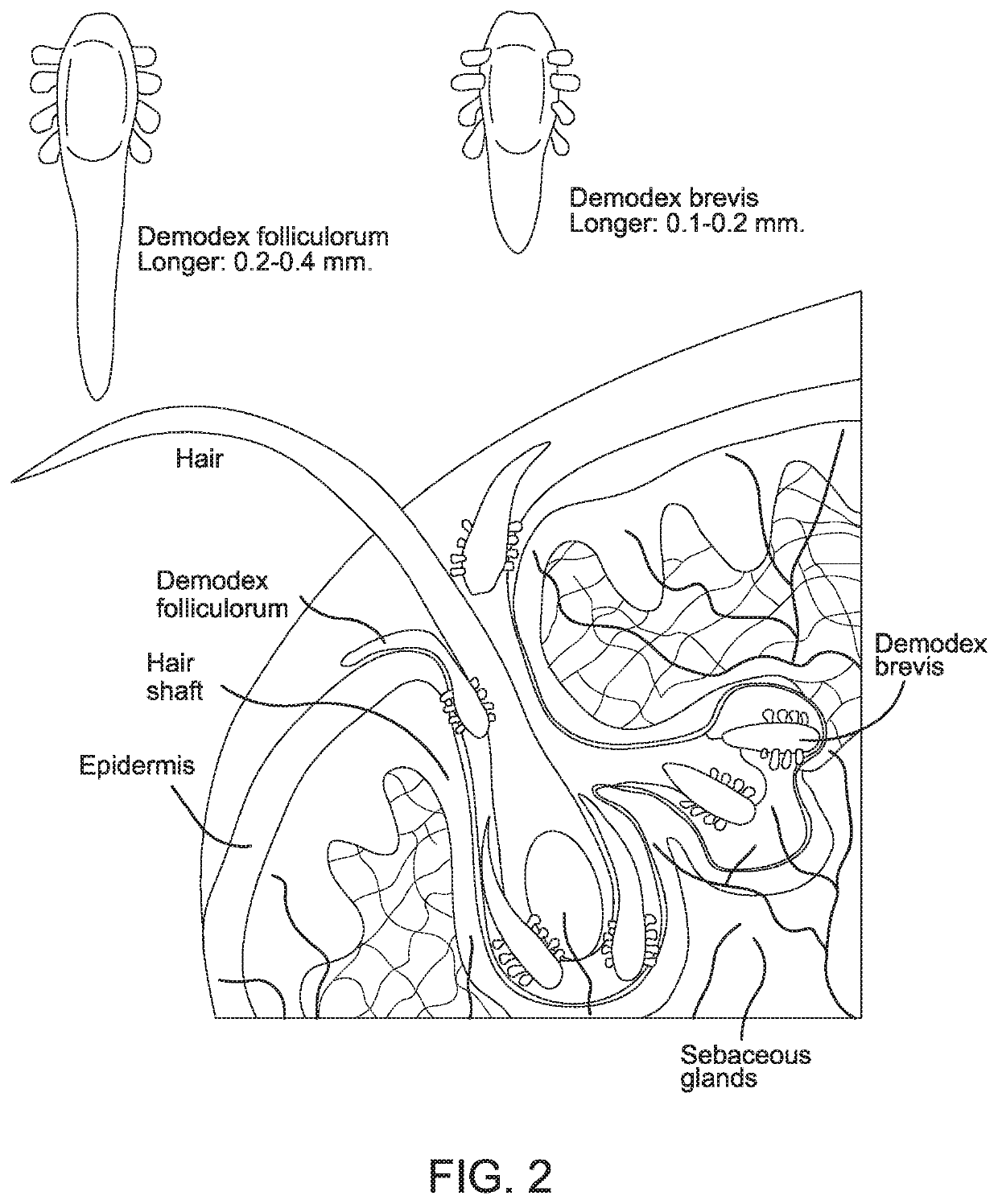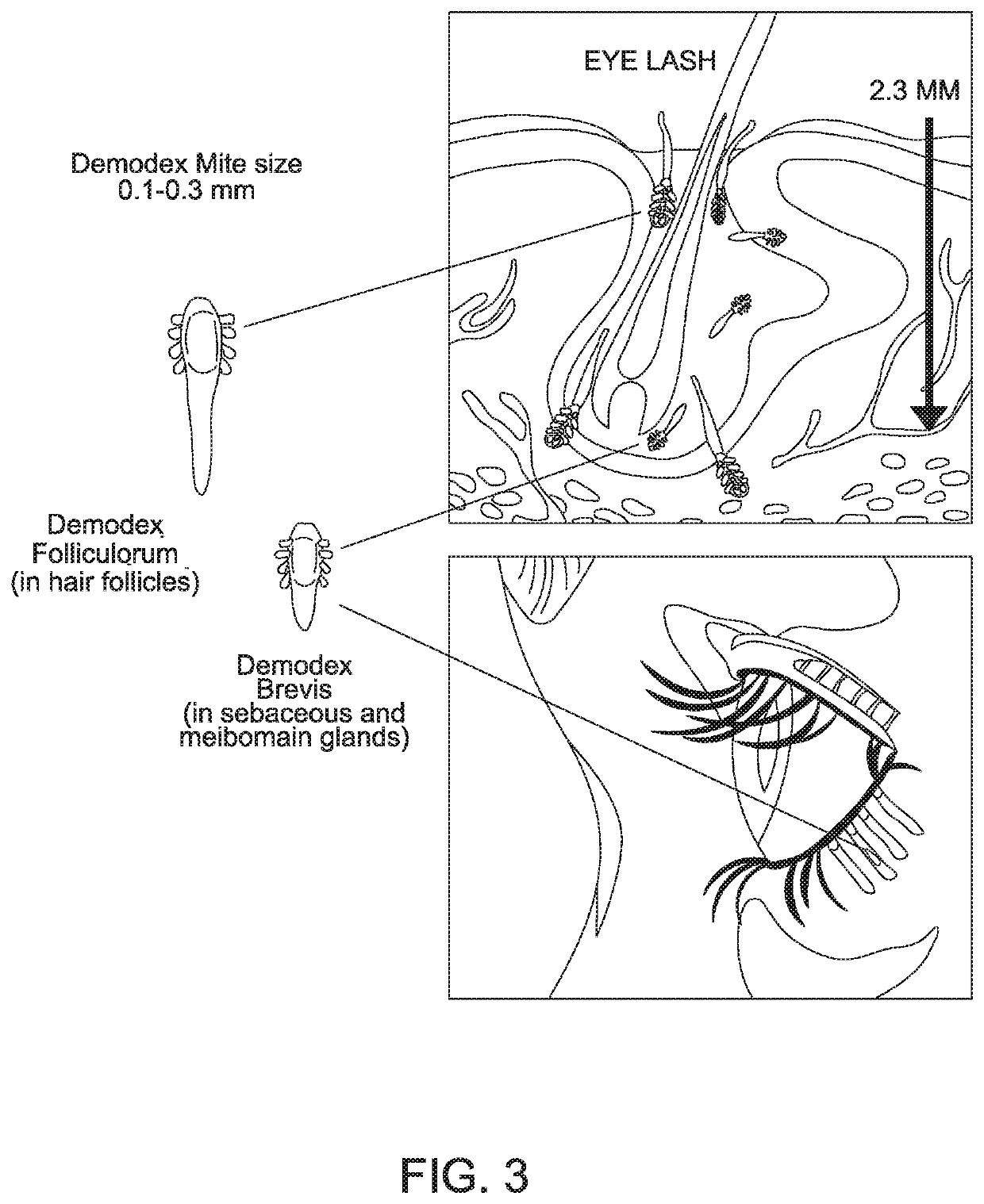Treatment of Ophthalmological Conditions with Acetylcholinesterase Inhibitors
a technology of acetylcholinesterase inhibitor and ophthalmological conditions, which is applied in the direction of antiparasitic agents, drug compositions, plant/algae/fungi/lichens ingredients, etc., can solve the problems of loss of eyelashes, no commercially viable pharmacological solution, inconsistent use of miticides other than acetylcholinesterase inhibitors,
- Summary
- Abstract
- Description
- Claims
- Application Information
AI Technical Summary
Benefits of technology
Problems solved by technology
Method used
Image
Examples
Embodiment Construction
[0048]In general, the terms and phrases used herein have their art-recognized meaning, which can be found by reference to standard texts, journal references and contexts known to those skilled in the art. The following definitions are provided to clarify their specific use in the context of the invention.
[0049]“Inactivate” is used broadly herein to refer to the functional ability to decrease the impact of Demodex brevis and / or Demodex folliculorum mites. For example, the inactivation may be by death of the mite. Alternatively, the inactivation may refer to the inability of the mite to reproduce, so that the mite die off occurs as the mites age and die without reproduction. So long as the treatment leads to an adverse effect on the Demodex brevis and / or Demodex folliculorum mites that corresponds to improved clinical outcome, such as symptom improvement, the treatment is considered herein to inactivate Demodex brevis and / or Demodex folliculorum mites.
[0050]“Efficiently transported” r...
PUM
| Property | Measurement | Unit |
|---|---|---|
| Length | aaaaa | aaaaa |
| Length | aaaaa | aaaaa |
| Time | aaaaa | aaaaa |
Abstract
Description
Claims
Application Information
 Login to View More
Login to View More - R&D
- Intellectual Property
- Life Sciences
- Materials
- Tech Scout
- Unparalleled Data Quality
- Higher Quality Content
- 60% Fewer Hallucinations
Browse by: Latest US Patents, China's latest patents, Technical Efficacy Thesaurus, Application Domain, Technology Topic, Popular Technical Reports.
© 2025 PatSnap. All rights reserved.Legal|Privacy policy|Modern Slavery Act Transparency Statement|Sitemap|About US| Contact US: help@patsnap.com



